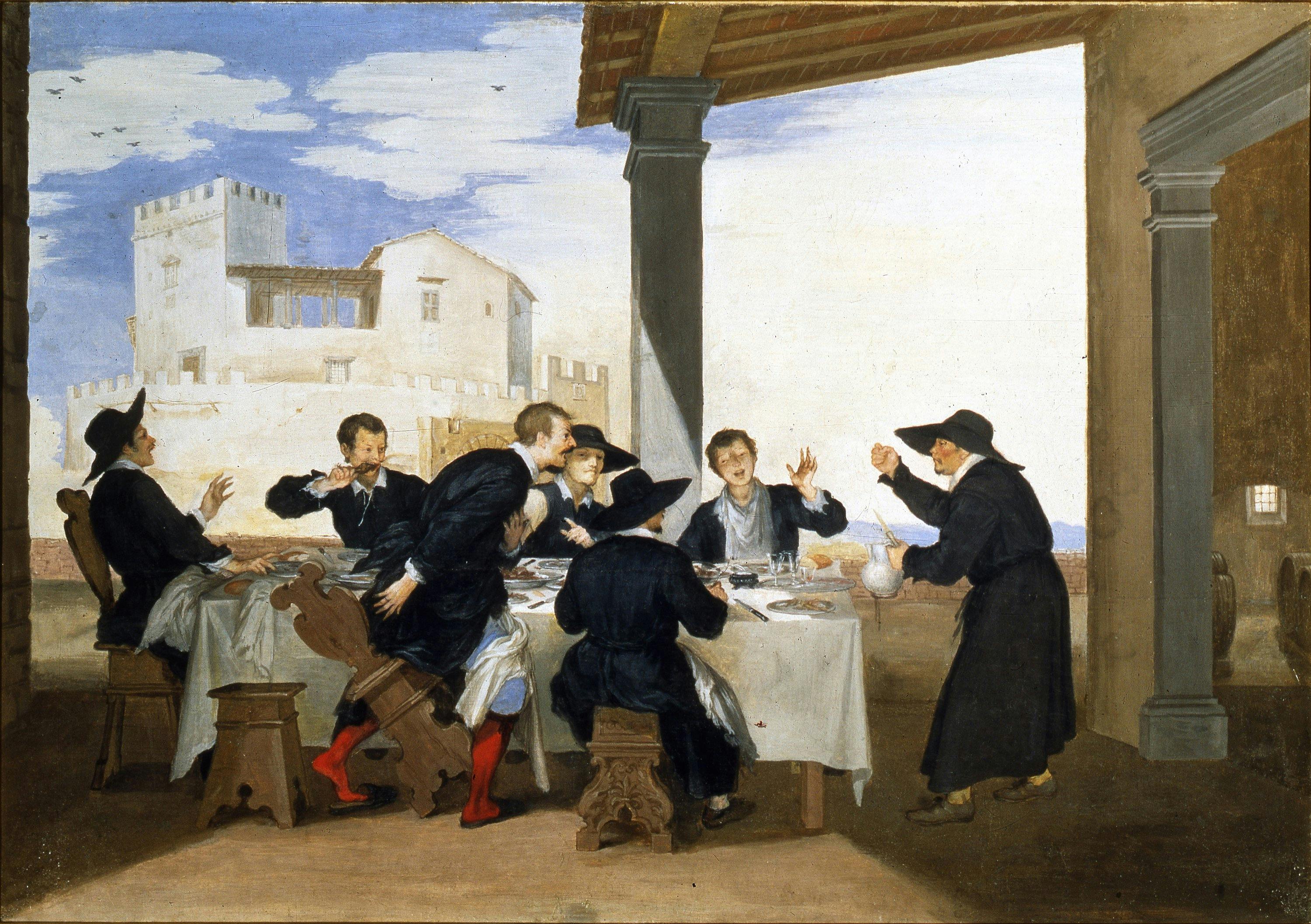One of Father Arlotto's Tricks
Baldassarre Franceschini, known as Il Volterrano (Volterra 1611 - Florence 1689)
The canvas, also known as The trick of the wine, is one of the most famous works by Il Volterranno, the nickname of Baldassarre Franceschini, one of the most skilled and original artists of seventeenth century Florence.
The main character in the scene, the figure stood to the right of the table, is Arlotto Mainardi (1396-1484), a priest of the church of San Cresci a Maciuoli in Pratolino who was well-known for his wit and penchant for jokes, many of which were recorded thanks to the Tuscan tradition of storytelling. The episode is set in Florence, a short distance away from Villa della Mula (visible in the background). In the scene, at a meal with other young priests Arlotto is invited by the host to go to the cellar to tap wine from the cask. Resentful of being chosen to tackle the stairs rather than the younger men, the practical joker decides to take his revenge. The scene captures the climax of the good-natured joke. Arlotto returns to the table with a full carafe of wine and claims to have forgotten to close the tap on the keg, provoking the agitated reaction of the host who can be seen leaping from his chair to run down to repair the damage while his companions look on in astonishment and amusement.
The expressive clarity of the faces and mannerisms of the figures demonstrates Il Volterrano’s characteristic narrative flair, as well as evidencing his influence from Pietro da Cortona, a leading figure in the development of decorative Baroque architecture who at that time was working on the famous Planets Rooms in the Pitti Palace.
The work was commissioned by the nobleman Francesco Parrocchiani, before being acquired by Cardinal Giovan Carlo de’ Medici who commissioned the artist to paint another two of Father Arlotto's well-known tricks. At the end of the seventeenth century, the painting became part of the collection of Grand Prince Ferdinand, first at the Medici villa of Poggio a Caiano and then in the apartments of the Pitti Palace.
